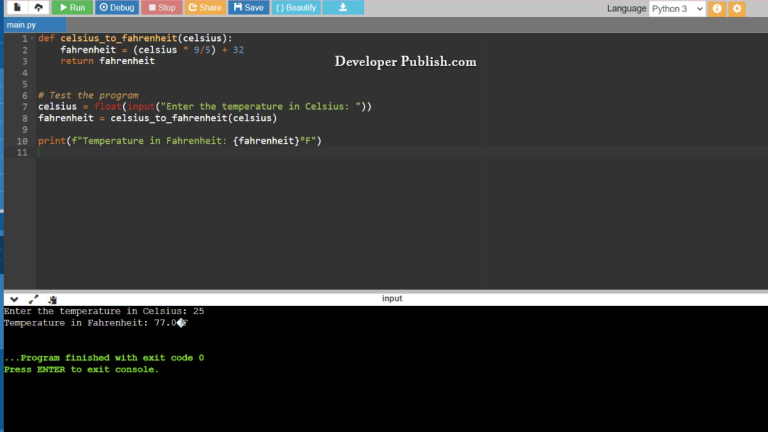This Python program detects a cycle in a linked list using Floyd’s Cycle Detection Algorithm. In computer science, a linked list is a data structure used to store a sequence of elements.
A linked list is composed of nodes, where each node contains a value and a reference (or link) to the next node in the sequence. One common challenge in working with linked lists is detecting whether the list contains a cycle, i.e., if there is any sequence of nodes that loops back to a previous node. This program demonstrates how to detect a cycle in a linked list using Python.
Problem Statement
Given a linked list, we need to determine whether the linked list contains a cycle or not.
Python Program to Detect Cycle in a Linked List
class ListNode:
def __init__(self, value):
self.value = value
self.next = None
def has_cycle(head):
slow = head
fast = head
while fast is not None and fast.next is not None:
slow = slow.next
fast = fast.next.next
if slow == fast:
return True
return False
if __name__ == "__main__":
node1 = ListNode(1)
node2 = ListNode(2)
node3 = ListNode(3)
node4 = ListNode(4)
node1.next = node2
node2.next = node3
node3.next = node4
node4.next = node2
has_cycle_result = has_cycle(node1)
if has_cycle_result:
print("The linked list contains a cycle.")
else:
print("The linked list does not contain a cycle.")
How it works
- The program defines a
ListNodeclass to represent each node in the linked list. - The
has_cyclefunction takes the head node of the linked list as input and uses the Floyd’s Tortoise and Hare algorithm to detect cycles. - In this algorithm, two pointers – slow and fast – traverse the linked list at different speeds.
- If there is a cycle, eventually the fast pointer will catch up to the slow pointer.
Input / Output



